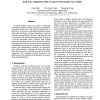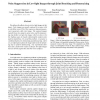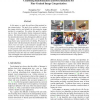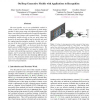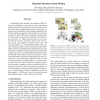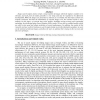CVPR
2011
IEEE
13 years 6 months ago
2011
IEEE
We address the problem of finding deformation between two images for the purpose of recognizing objects. The challenge is that discriminative features are often transformation-va...
CVPR
2011
IEEE
13 years 6 months ago
2011
IEEE
As having multiple images of an object is practically convenient nowadays, to jointly align them is important for subsequent studies and a wide range of applications. In this pape...
234
click to vote
CVPR
2011
IEEE
13 years 7 months ago
2011
IEEE
When glancing at a magazine, or browsing the Internet, we are continuously being exposed to photographs. Despite of this overflow of visual information, humans are extremely good...
CVPR
2011
IEEE
13 years 7 months ago
2011
IEEE
We address the effects of noise in low-light images in this paper. Color images are usually captured by a sensor with a color filter array (CFA). This requires a demosaicing proc...
CVPR
2011
IEEE
13 years 7 months ago
2011
IEEE
In this paper, we study the problem of fine-grained image categorization. The goal of our method is to explore fine image statistics and identify the discriminative image patche...
CVPR
2011
IEEE
13 years 7 months ago
2011
IEEE
We describe a generative model of the relationship between two images. The model is defined as a factored threeway Boltzmann machine, in which hidden variables collaborate to de�...
CVPR
2011
IEEE
13 years 7 months ago
2011
IEEE
The most popular way to use probabilistic models in vision is first to extract some descriptors of small image patches or object parts using well-engineered features, and then to...
CVPR
2011
IEEE
13 years 7 months ago
2011
IEEE
Conventional rigid structure from motion (SFM) addresses the problem of recovering the camera parameters (motion) and the 3D locations (structure) of scene points, given observed ...
IJACTAICIT
2010
13 years 8 months ago
2010
Image search engines tend to return a large number of images which the engines consider to be relevant, and such pool of results generally is very large and may be regarded to be ...
ICPR
2010
IEEE
13 years 8 months ago
2010
IEEE
Abstract--Rough face alignments lead to suboptimal performance of face identification systems. In this study, we present a novel approach for identifying genders from facial images...

